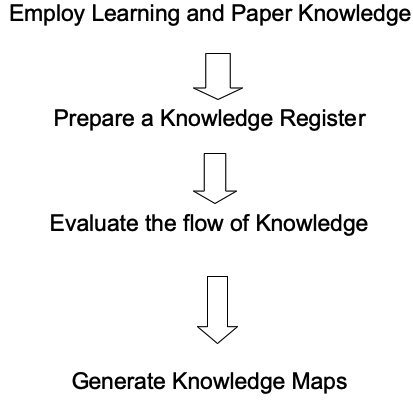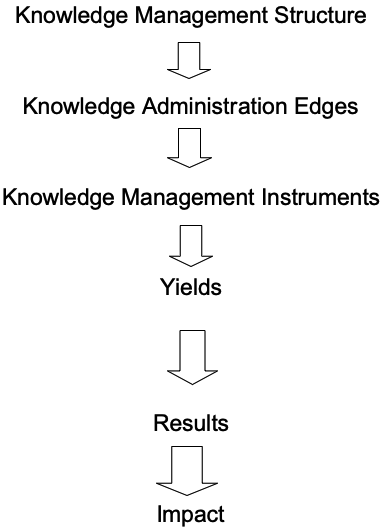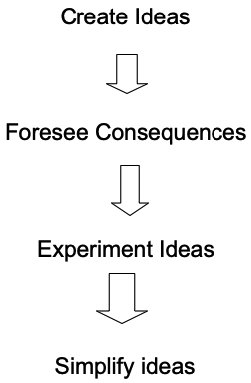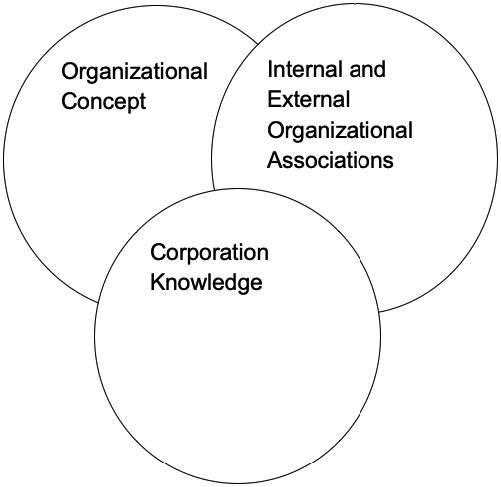Introduction
Learning and development is the path to success in any organization. Knowledge should be consistently supplied to an organization’s staff members through learning both externally and internally. It is, therefore, necessary to encourage and energize the corporation knowledge and expertise for learning. Organizations opting to remain pertinent and survive must engage their staff members in learning and development. Many organizations thus employ fast and easy models, which are often, led by technology. However, most of these efforts to generate organizational change are fruitless (Chell, 2001).
Learning and development are the only sustainable, economic benefits to an organization. These are seen as an answer to a progressively unpredictable and vigorous business surrounding. The real meaning of organizational learning and development is the organization’s capacity to utilize the incredible psychological capability of all its members. This is done so as to generate procedures that will enhance the performance of the business. Learning and development in an organization allow learning of organization members and constantly converts the organization. Organization members persistently enlarge their abilities to generate results they aspire. Through learning and development, new and extroverted patterns of reasoning are fostered, and collective ambitions are set. People constantly train to learn jointly (Rawlins, 2002).
The notion of learning and development is progressively dependent. This implies that the more staff members in an organization learn via application, the more they acquire new knowledge. Organizational learning and development programmes have developed over time into expertise administrative programmes. Organizations struggle to promote present goods, services and inventiveness through learning and Development (Perry 2007). Programmes such as management of total quality (TQM) and Business Procedure Remanufacturing (BPR) prosper or fail based on human attributes such as talents, ways of thinking and organizational customs. It also seems that many organizational executions are geared towards extremely specified procedures, which are defined, for diverse conditions (Perry 2009).
The present concern in learning and development in an organization originates from the identification that such initiatives cannot function by themselves. Something more is required to deal with quick and unanticipated changes, provide suppleness to deal with animatedly changing conditions and permit workers on the front line to react to initiative founded on customer wants versus being restrained by organizational procedures developed for diverse circumstances.
Learning and development help an organization to establish a capability for inventiveness which is fast-paced. As the aggressive environment becomes more multifaceted and variegated, there is an increased need for a bigger genetic diversity and a wider array of administrative beliefs. Learning and developmental organizations possess in place structures, methods and procedures that are used to improve their capacities and that of staff members. This is done so as to attain sustainable goals for the organization as well as the societies in which they partake (Cohen 2011).
Organizations appear to systematize around people. With the ever-growing need to establish mechanisms for constant learning and inventiveness, approaches for organizational learning and development are significant for learning than ever (Oyston 2003). This report will provide a report of a case where I am the newly appointed Learning and Development Manager in an organization where learning has an extremely low profile. In this organization, learning is also not strategically aligned, and significant resources are being exhausted.
It will discuss an audit of the existing approach being taken to learning and development in this organization. This will entail an audit of the present state of learning and development in the organization. It will provide a framework for a planned learning design that attends to competencies, techniques and procedures that translate learning department into a foundation for organizational learning and Development. Associated theoretical models and the measures taken to develop learning in this organization will also be discussed.
Audit Areas and Elements
Key areas of the audit
The audit that will be used in this organization is the knowledge audit. This will assist this corporation to recognize their knowledge-based properties and establish strategies to control them. Establishing a knowledge sharing custom is changing practice in an organization. It leads to the substantial performance of the company. It was found necessary for the corporation to have a precise image of the place it wants to be and its position at present. The conventional context of this knowledge audit involved assessing the workforce, organization, system and procedure. This was done by a self-regulating third party. The knowledge audit also studied the financial accounts of this organization to evaluate its performance alongside standards. The knowledge audit functioned distinctly, and some demystification was required (Dixon 1996).
The crucial characteristic of the knowledge audit adopted for this case is that it placed all the staff members and managers in the middle of interests. It asserted to establish what persons know and what they do with this knowledge. It can be explained as an examination of the knowledge wants of a corporation and the interrelationship among leadership, association, expertise and learning. It is, therefore, of the potencies and limitations of a corporation’s knowledge and of the chances and risks that face an organization. The main function of this knowledge audit in this organization was to provide concrete verification of what knowledge is necessary to the organization, the position of that knowledge, how it is utilized, the troubles and difficulties present and the perfection to be made (Senge 2005).
The knowledge audit queried the following questions: The knowledge wants of the corporation the unstated and overt knowledge assets in the organization, how knowledge runs both officially and unofficially in the organization and between customers and pertinent corporations, It also enquired the criteria through which that knowledge is recognized, generated, kept, disseminated and used. It queried what challenges hindered the flow of knowledge in the organization.
For instance, to what degree does the organization’s people, business procedures and technology presently encourage or hinder the sufficient transfer of knowledge. Finally, what breaches and repetitions were present in the corporation’s knowledge? (Price 2000). This knowledge audit focused on the whole corporation. Viewpoint polls, however, did not sample the whole population since marginal proceeds decreased as the degree of associated practices increased. This was based on the number of queries posed (Senge, 2005).
Deliverables, which arose as a result of this knowledge audit, were manifold and could affect organizational actions and the persons and groups connected with it. Not all deliveries could be measured. Depending on the organization’s drive and coverage, a knowledge audit was anticipated to assist the corporation in recognizing what knowledge is required to achieve its objectives and support personal and group actions. It also helped the organization identify the knowledge generated and help evaluate its worth and role to organizational performance.
It gave concrete proof of the degree to which knowledge is efficiently controlled and designated where alterations should be done. It recognized intellectual possessions and allowed the generation of an intellectual asset record. It differentiated rational assets that were not being utilized to the best hence generating unexploited potential. It assessed the utilization of exterior knowledge and proposed ways in which it might be utilized to an enhanced effect. It also reviewed the use and sufficiency of knowledge products (Ridley 2008).
Constituents of the Audit

Working a framework for learning and development

Audit in the Organization
Measures to Develop Learning in this Organization
For learning and development to be efficient in this organization, four factors were put in place. These included a learning custom, procedures, tools and methods and talents and incentives. Learning custom involved an environment that fostered learning. There should be a well-built similarity with those aspects related to innovation. The procedure as a factor was to support interaction across peripheries. These processes involved transport and communication, growth and management procedures. This was in contrast to business set processes. Tools and methods assisted individuals and grouping learning such as originality and techniques of working out the problem. Talents and incentives helped the staff members to learn and cope with different situations (Mayo 2004).
For learning and development to be effective in this organization, an upcoming external orientation was necessary. The organization established an understanding of its surroundings. The superior teams took time to reason about the potentials. Free communication and flow of messages was esteemed. Arrangements were done to ensure that proficiency was available when required. Staff members networked expansively crossing the organizational limits to enhance their knowledge and skills. (Grootings & Mallea 1999)
Dedication to learning and individual development was a significant factor. Workers at all stages were advised to learn frequently, and the capability to learn was remunerated. The entire workforces in this organization were valued. Notions, originality and imaginative capacities were enthused, utilized and developed. Diversity was identified as potency where opinions could be challenged. Climate of sincerity and hope was created. This encouraged staff members to come up with ideas, speak their minds and meet challenging deeds.
Learning and development in this organization were thus achieved through experience. Learning from blunders was often more influential than learning from achievements. It was ensured the staff members in this organization were rationally curious about their duties. This was achieved through mirroring on the experience, creating experience founded theories of transformations and constantly testing this in relation to the other staff members (Peddler & Burgoyne 1991).
Associated Theoretical Models
Learning and development in this organization entailed the development of advanced degrees of knowledge and talent. In this organization, a four-level model was used. The first level involved learning essentials, knowledge and procedures. This pertained to known conditions where fluctuations were minor. Level 2 involved learning new employment talents that were moveable to new conditions where present reactions required being altered. Introducing outside expertise was a practical tool at this level (Latchem & Lockwood 1998).
Level 3 involved learning to become accustomed to a changing environment. This applied to vibrant conditions where the resolutions required developing. Experimentations and obtaining lessons from victory and crashes was the technique of learning and development in this model. The final level involved training to learn (Ramalingam, 2005).
This dealt with originality and inventiveness. It involved planning the future instead of simply adapting to it. Suppositions were confronted, and knowledge was restructured. Communication models were utilized to permit the lateral movement of information and expertise across official structural limits. In this organization, which is geographically spread, attention was paid to support lateral communication and conquer the growing danger of silos establishment (Hughes & Ferrett 2009).
Return on Investment is a performance standard that was used to assess the effectiveness of an investment or to evaluate the sufficiency of several distinct investments. It was calculated by dividing the profits of an investment by the expenditures associated. The statistical measures associated with this model is that if an investment has a negative ROI, it should not be carried out. Only investments with a positive ROI should be undertaken. An example of ROI is whereby a fiscal analyst contrasts two products by dividing the total profit created by each product by the marketing expenditures (Mayo 2004).
Strategic HR in Alignment with Learning and Development helped these organization managers to conceptualize, relate and align the fundamental constituents of an HR and corporation strategy. Through learning and development, organizational, staff members learned how to control and generate a fully aligned HR strategy and execution plan for their corporation. It equipped staff members’ with knowledge and structure necessary to advance their Human Resource Strategy. It provided the managers of this organization with the basics and techniques of how to incorporate their HR strategy to obtain organizational superiority (Armstrong, 2006).
Kirkpatrick’s model was also applied to this organization. It has four levels of organizational evaluation. It involved what the staff members thought about learning and development, the consequential increase in capacity, the degree of behaviour and ability enhancement and execution and outcomes for the organization resulting from the workforce performance (Chanda & Krishna 2007).
The cycle of learning and development in an organization

Approaches Used in Learning and Development in this Organization
A fantastic learning and development approach in an organization should start from the top. This is helpful since it provides forward motion. This then moves to the identification of a serious problem facing the organization. A task force is then instigated. This needs both a vision and a driving force. Human resource managers, however, usually prefer the approach which commences with the organizational diagnosis. This is then connected to an already existing procedure in the organization (Latchem & Lockwood 1998).
The first approach used in learning and development in this organization is tactical and situation planning. This approach went past the numbers and supported challenging suppositions. It allocated part of the resources for trials. Competitor analysis was the other approach. It included expertise and political factors. A rational competitor evaluation procedure that collected information from manifold sources examined and assessed this information. This added significance and was a sign of proof that the right systems were in place (Mankin 2009).
Information and management of expertise was the third approach. This involved the use of criteria to recognize, audit, assess the worth, establish and utilize information as a reserve. Cooperation procedures and groupware were used (David & Roger, 2006). The fourth approach was capacity planning. This entailed outlining the capabilities of the corporation, both qualitatively and quantitatively. Outlining this on a scale could be of importance to planning regulation (Latchem & Lockwood 1998).
Group work and corporation development was the fifth approach. Facilitators were used to assisting teams’ with work. Values were reinforced. Outlooks were also established and cohesiveness created. A climate of expanding objectives, distribution and support, was also created. Measurement of the organizational performance was then carried out. This aimed to locate the right measures and pointers of performance. This supported learning ventures in the organization. The last approach was the reward and appreciation systems. Procedures and mechanisms that identify acquirement of new talents, group work and personal effort were employed (Morrell & Harvey 1999).
The above approaches that were used to facilitate learning and development in this organization were competency-based. This offered an organized approach to meet the requirements of staff members learning and development. They also encouraged the achievement of the organizational objectives. Competency, in this case, refers to a person’s proven knowledge, talents and outlooks conducted to a standard within an employment concept. A competency founded learning and development approach in this organization outlined what the workforce must know and do to carry out their tasks correctly. Vital competencies were developed at the employee appointment level. This remained constant via learning and development, staff appraisal and functions related to career paths (Armstrong, 2006).
A balanced approach was also used to encourage originality and create new insights and inventive procedures. This was achieved through vigilant development of policies framework, systems, plans and process. Questions that drew on information related to learning and development were probed. Essential provisional and opportunistic approaches were used. This relied on promoting a passion for learning and development in the workforce. This developed learning and development capabilities. It generated an opportunity for unofficial sharing. It also created an encouraging custom in the organization. Care was taken to prevent the staff members from disappointments and unintended results (Collier & Samuel 2006).
Tools and methods
Learning and development in this organization required persuasive techniques for disseminating information and expertise, specifically inherent knowledge, suppositions and ideas that conventionally are under the surface. Several tools and methods were used in learning and development in this organization. The first one is an inquiry. This involved brainstorming and searching for relevant information. Originality is the next method employed. This involved interviewing and relating different ideas. Making logic out of conditions was another technique. This involved choosing courses of acts. Results were then observed and put down. Finally, knowledge was restructured by implanting new knowledge into psychological models and committing this knowledge into memory (Chanda & Krishna 2007).
Learning and Development Management Tools

Conclusion
There are some inhibitors to learning and development in an organization. One of them is the lack of time creation by the staff members to relax and reason strategically. Another inhibitor is staff members and managers concentrating too much on other mechanisms and procedures. Unwillingness to learn and develop or invest in learning is another drawback. Too many secreted individual agendas among organization workers are also an obstacle.
The absence of actual empowerment may also hinder learning and development in an organization. Developing learning and development in an organization is, therefore, all about conducting this from inside the organization and employing a holistic approach. Key skills including communication, particularly across corporation limits, paying attention and observing, advising and encouraging colleagues, employing a holistic approach and dealing with confrontations and doubts are significant. Measures should be put to overcome all the associated drawbacks.
The structure of learning and development in an organization should put into consideration the principal drawbacks to learning. It should be carefully brought into line with a strategy. It should also eliminate the establishment of silos and reduce unnecessary degrees of hierarchy. Enough resources should be assigned for learning and development. This should be done in terms of time, learning space, professionals and financial statement for knowledge administration and learning infrastructures. Support of these practices should be extended in a planned manner.
The problem facing organizational administrators today is when it comes to efforts required to learn new talents. This involves techniques and procedures that take on their staff members in programmes of constant capacity development. Learning should be incorporated into everyday organizational activities. It should be part and parcel of daily activities in the organization. It should also be revitalizing, motivating and full of fun. Achieving the best out of every staff member, including the managers, is paramount so as to conquer the upcoming challenges.
Recommendations
Staff members in an organization are supposed to be reflective. They should comprehend their strengths and weaknesses. They should also have a wide array of tools, techniques and approaches for learning individually and in the corporation with others. Reflective work practices improve when staff members are provided with a high degree of mental security and trust. It is destabilized when the task force is predisposed to inequitable negative disapproval. Group work is, therefore, a crucial element of genuine learning and development in an organization. In reality, groups in learning and development in organizations should work as learning societies with sensitively articulated conflicts.
References
Armstrong, M. (2006) A handbook of human resource management practice. London: Kogan Page.
Bradford, D., & Cohen, A., (1997) Managing for Excellence: The Guide to Developing High Performance in Contemporary Organizations. New York: John Wiley and Sons.
Chanda, A., & Krishna, S., (2007) Strategic Human Resource Technologies: Keys to Managing People. Los Angeles: Response.
Chell, E. (2001) Entrepreneurship: globalization, innovation and development. London: Thomson Learning.
Cohen, N. (2011) Green Business: An A-to-Z Guide. Thousand Oaks: Sage Publications.
Collier, M., & Samuel, A., (2006) CIMA Learning System Management Accounting – Risk and Control Strategy. Oxford: CIMA/Elsevier.
David, D., & Roger. M., (2006) Design Thinking and How It Will Change Management Education: An Interview and Discussion. Academy of Management Learning and Education. 5 (4). pp. 512–523.
Dixon, T. (1996) Communication, organization, and performance. Norwood: Ablex Pub.
Grootings, P., & Mallea, R., (1999) Towards lifelong learning in Hungary. Paris: OECD.
Hughes, P., & Ferrett, E., (2009) Introduction to Health and Safety at Work. London: Elsevier.
Kotler, P., & Zaltman, G., (1971) Social Marketing: An Approach to Planned Social Change. Journal of Marketing. 35. pp. 3–12.
Latchem, R., & Lockwood, F., (1998) Staff development in open and flexible learning. Amsterdam: Butterworth-Heinemann.
Mankin, D. (2009). Human Resource Development. New York: Oxford University Press.
Mayo, A. (2004). Creating a Learning and Development Strategy: The HR Business Partner’s Guide to Developing People’ Chartered Institute of Personnel and Development. Boydell: McGraw-Hill.
Morrell, C., & Harvey, G., (1999) The clinical audit handbook: improving the quality of health care. London: BailliéreTindall.
Oyston, E. (2003) Centered on learning: academic case studies on learning centre development. Aldershot: Ashgate.
Peddler, M., & Burgoyne, J., (1991). The Learning Company: a Strategy for Sustainable Development. Boydell: McGraw-Hill.
Perry, B. (2009) CIMA Learning System Enterprise Operations. Oxford: CIMA/Elsevier.
Perry, B. (2007) System Organizational Management and Information Systems. Oxford: CIMA/Elsevier
Price, A. (2000) Principles of human resource management: an active learning approach. Oxford: Blackwell Business
Ramalingam, B. (2005) Implementing Knowledge Strategies: Lessons from International Development Agencies. Working Paper 244. Overseas Development Institute. Web.
Rawlins, M. (2002) Principles for best practice in clinical audit. London: Radcliffe.
Ridley, J. (2008) Cutting Edge Internal Auditing, with CD-ROM. Chichester: Wiley.
Senge, P. (2005) The Fifth Discipline Field book: Strategies and Tools for Building a Learning Organization. Garratt: Harper-Collins.
